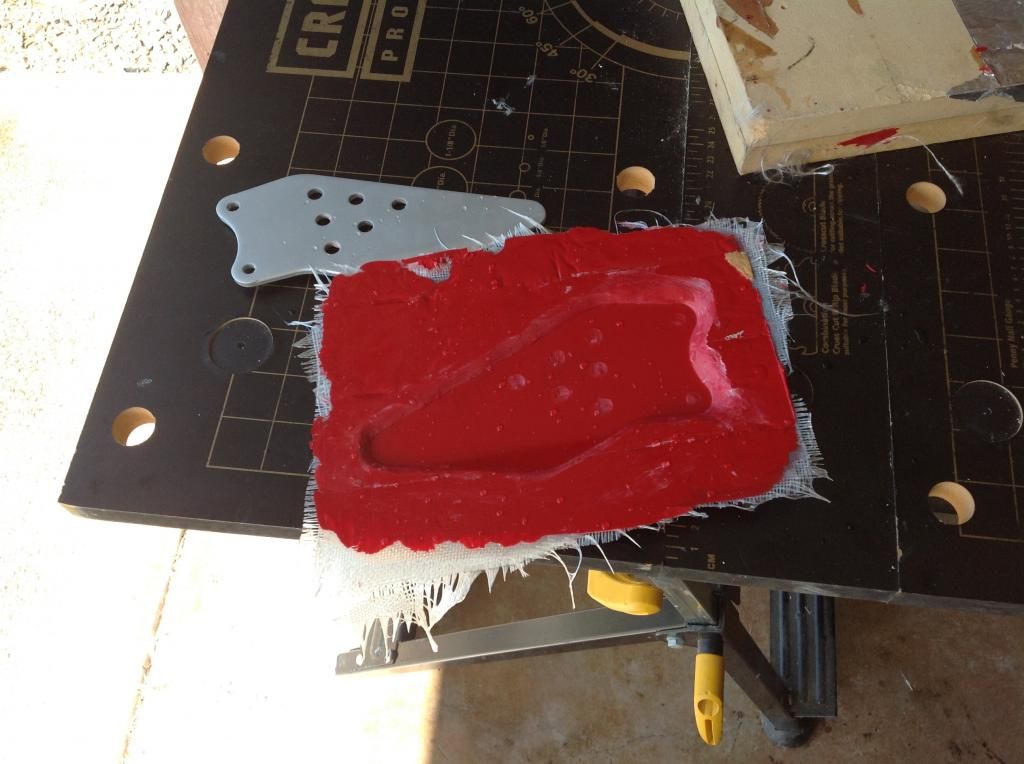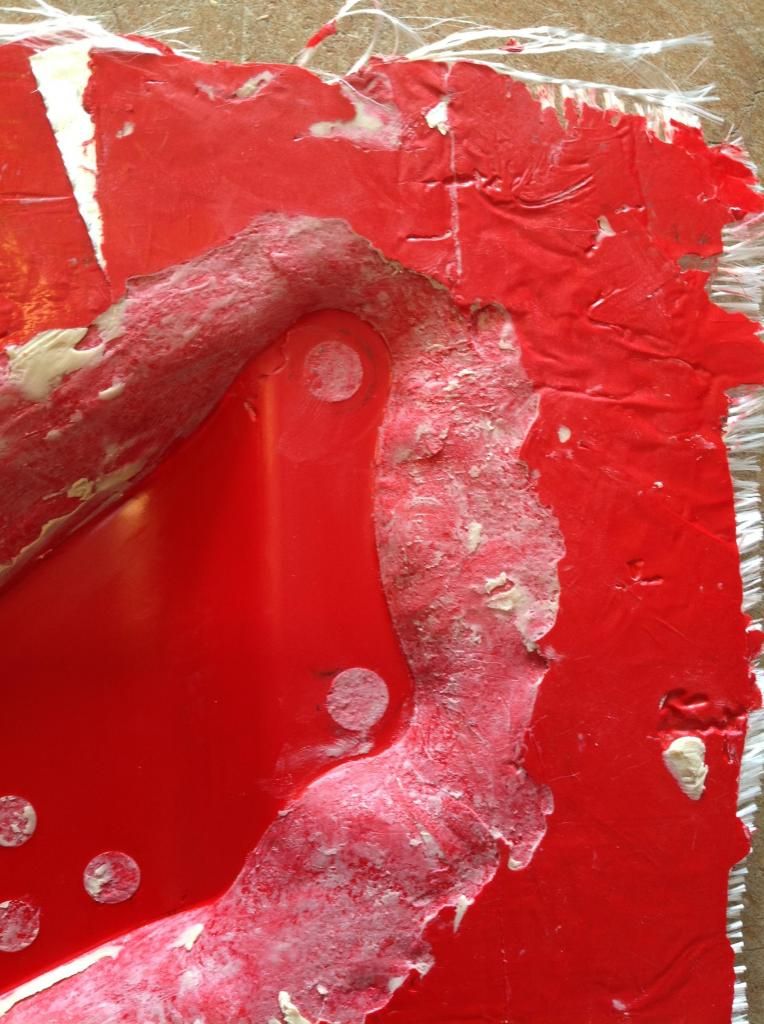Hey Guys,
Forgive me for my beginner question, but the other day i was at the store picking up some polyester gelcoat and the lead composite guy asked me what I was making. I told him that I was making molds for the heel guards on my motorcycle. Yes, I could have just did an overlay and pull it from the part, but I wanted practice making molds.
Anyway, when I ask him for polyester gelcoat he told me for what I was doing I should just make the mold out of marine polyester laminating resin. So I went his route first. It was difficult to get coverage since the resin was on the thinner side that I had to pour the resin on and move it around rather than brushing it on. The second one came out in usable shap but wanted something thicker for the other side so I went back and picked up some red gelcoat.
With the gelcoat, since it is thicker, I was able to brush it on. A long time ago, I bought an LVLP gun with a 1.8mm tip that was recommended by that guy, but I need to do more research on spraying gelcoat.
But my question is, should I be making things out of the marine lam resin? Basically they are the same thing except the gelcoat has pigment to it?
Thanks in Advance

 Now I’m just gonna do the mold again since it’s cracked. Here’s a pic
Now I’m just gonna do the mold again since it’s cracked. Here’s a pic  In the second pic, can anyone tell me why I got these cracks? This was done by brushing the gelcoat on.
In the second pic, can anyone tell me why I got these cracks? This was done by brushing the gelcoat on.
